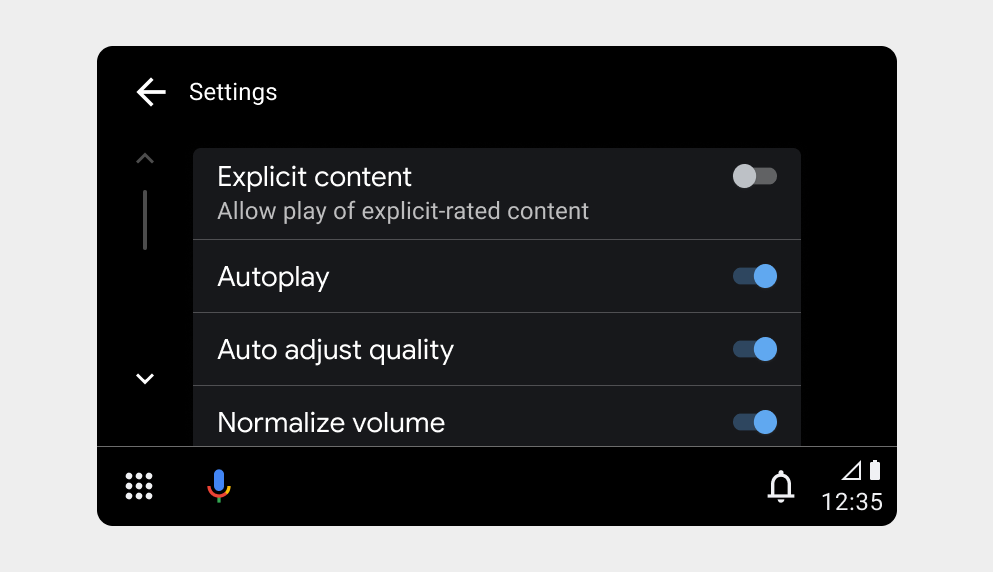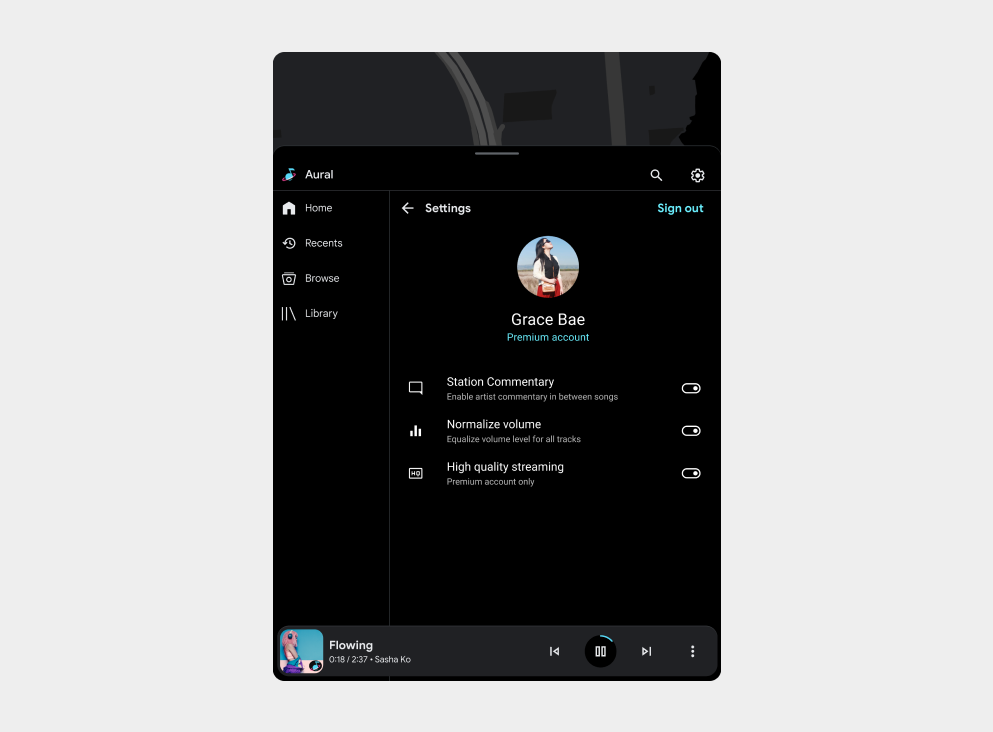Page Summary
-
While settings are not essential on Android Auto, creating them as described can potentially work for both AAOS and Android.
-
When designing car screen settings using Android for Cars App Library templates, you should select only essential settings and organize them for easy navigation, ideally on a single screen using the List template.
-
You should also design dialogs and error flows using templates like the Message template and ensure your settings meet the UX requirements for the Android for Cars App Library.
-
App developers should keep settings simple, easy to navigate, and include only necessary settings or those relevant to media listening in the car, while avoiding excessive use of dialogs.
Settings for the car screen are not essential on Android Auto, as the app is projected from a phone that already has its own settings experience. However, if settings are created as described, they can potentially work for both AAOS and Android.
When designing car screen settings using Android for Cars App Library templates, follow these steps:
- Select essential settings: Include only the settings necessary for using the app while driving.
- Organize settings for easy navigation: Use the List template and aim to display all settings on one screen.
- Design dialogs and error flows: Utilize templates like the Message template.
- Ensure usability: Check that your settings meet the UX requirements for the Android for Cars App Library.
To learn more about designing with the templates, see Build apps with templates.
As you design your settings flow, keep in mind these requirements and recommendations:
Settings examples
In AAOS, the app bar in the media app template includes an option for a Settings control, which users can select to bring up an overlay with your app settings screen.



Settings requirements
| Requirement level | Requirements |
|---|---|
| SHOULD | App developers should:
|